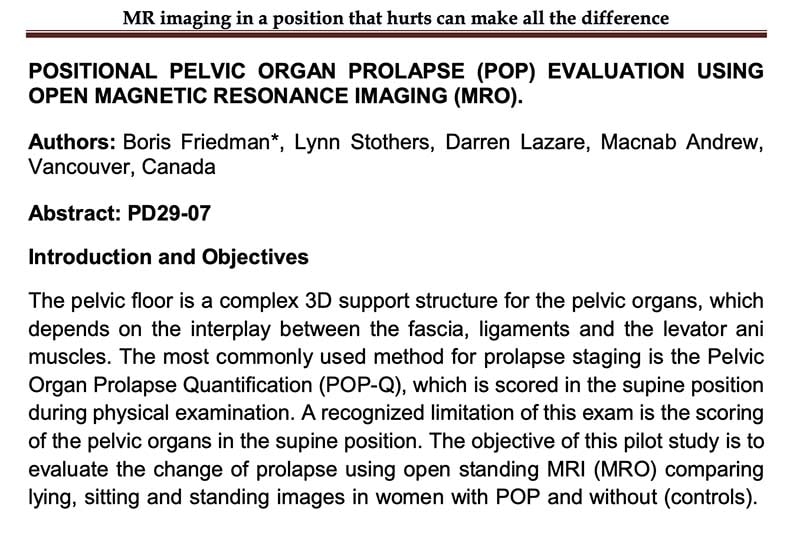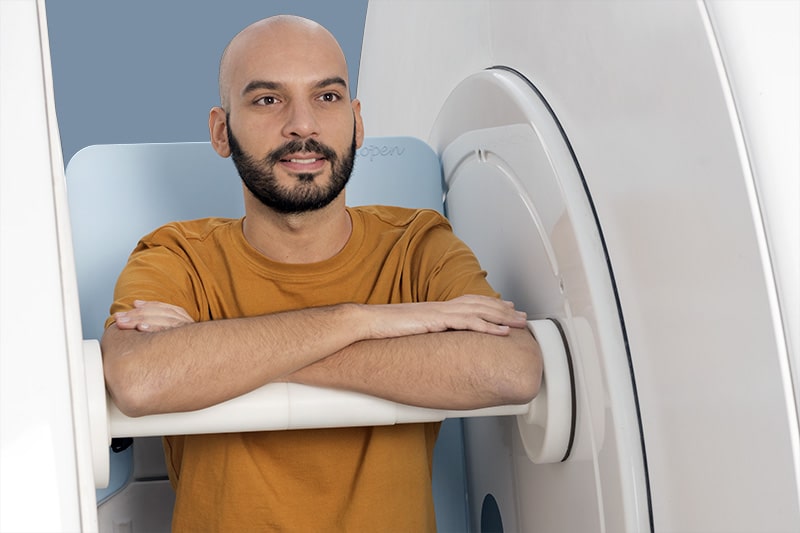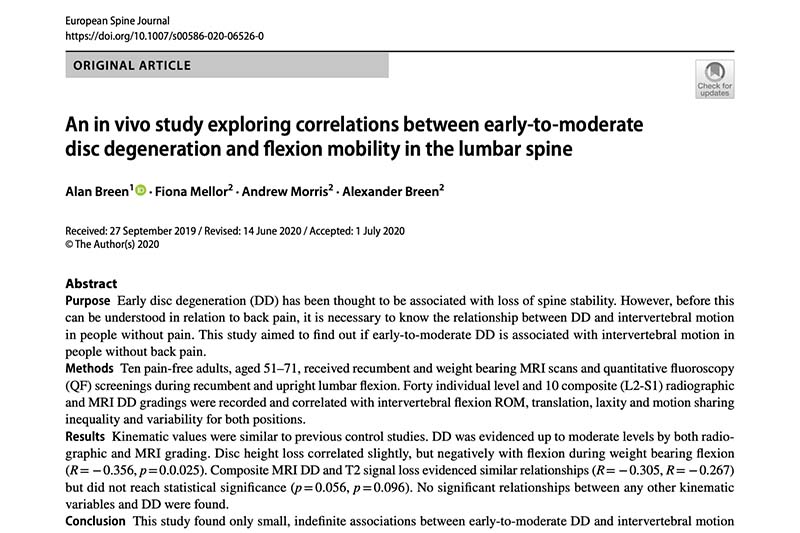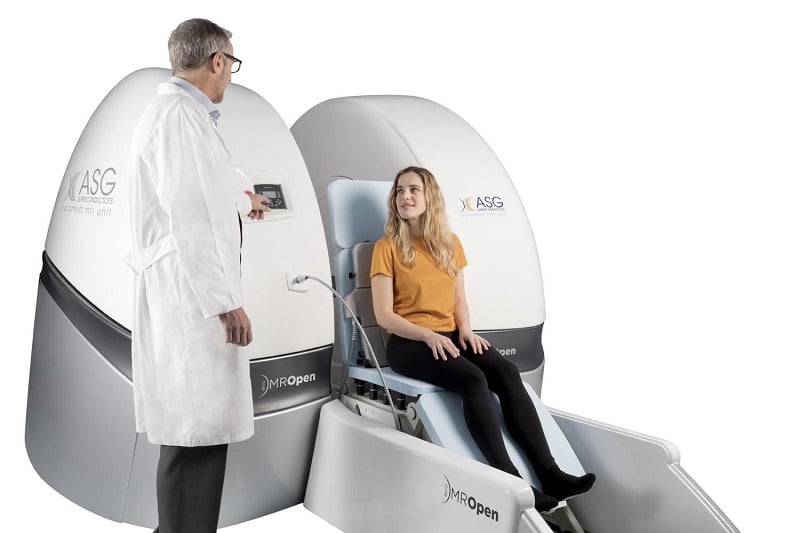The pelvic floor is a complex 3D support structure for the pelvic organs, which depends on the interplay between the fascia, ligaments and the levator ani muscles. The most commonly used method for prolapse staging is the Pelvic Organ Prolapse Quantification (POP-Q), which is scored in the supine position during physical examination. A recognized limitation of this exam is the scoring of the pelvic organs in the supine position. The objective of this pilot studyis to evaluate the change of prolapse using open standing MRI (MRO) comparing lying, sitting and standing images in women with POP and without (controls).
NEWS
Do you know why MROpen EVO is so special?
Heather Mason, our RT (MR) Applications Specialist, will discuss [...]
Video: the world’s only OPEN SKY Upright MRI
Discover MROpen EVO features, technology and innovation in the [...]
An in vivo study exploring correlations between early‑to‑moderate disc degeneration and flexion mobility in the lumbar spine
Early disc degeneration (DD) has been thought to be [...]
MROPEN EVO The next generation in positional MR imaging
The MROpen EVO system is the next generation in [...]
LIVE EVENT: Collaborative research and open upright MRI
Collaborative research and open upright MRI - Professor Alan [...]
1 million hours of operations
When innovation meets reliability and industrial requirements: our MgB2 [...]
DISCOVER MORE








